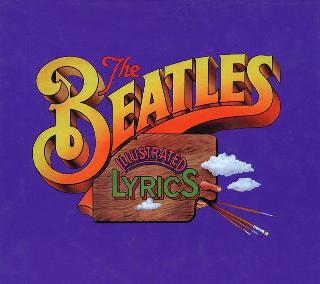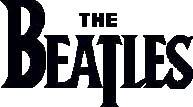Index
Home
Vorige
The Inner Light
Composer(s) : Harrison
Year : 1967
Chords/Tabs: The Inner Light
Notes on "The Inner Light" (TIL)
KEY E-flat Major (Mixolydian)
METER 4/4
FORM Intro -> Verse -> Break -> Verse -> Break' (w/complete ending)
GENERAL POINTS OF INTEREST
Style and Form
- Along with
"Love You To" and
"Within You Without You," this song
is one of George's three most unabashedly Indian-influenced efforts.
While all three songs present an ingenious-cum-tenuous merger of
cultures, this one is particularly distinguished by virtue of
its indigenous purity of instrumentation, "inwardly focused"
lyrics, and almost strict formal alternation between instrumental
and sung interludes.
- By the way ... if you contrast this song with our previous subject,
"Lady Madonna,"
you learn an interesting psychological lesson about
the the extent to which formal complexity in music affects your
perception of musical "length," somewhat independent of empirically
measured absolute real-time duration.
TIL is the longer of the two songs, yet one experiences LM as longer
than TIL because the latter's form is longer than that of the former song.
Think it over.
Melody and Harmony
- In spite of the clearly mixolydian mode and the florid ornamentation
of the lead instrumental part, the melodic material on the backing
track remains curiously regimented mostly into four-note scale patterns
that move downward; always balanced out at the very end by an upward
scale figure of three notes. George's sung tune contrasts by virtue
of its large number of leaps by 3rds, 4ths, and even one 5th.
- Harmony here is minimalistic with the I chord alternating with either
ii or IV. There's no "dominant" progression to be found; no V, not
even flat-VII. This is about as close as you can get to drone-like
stasis and still use more than one chord. The manner in which the
instrumental lead finishes all his sections with that upward riff
toward the 5th scale degree endows the sense of home key with a
precipitously high center of gravity.
Arrangement
- I'm calling it "E flat," but this is one of those rare Beatles tracks
mastered somewhere in the cracks with respect to so-called standard pitch.
To the extent that this song is no
"Rain" with its intentionally manipulated
tape speed, I suspect the result here is an unintentional side-effect of
poorly calibrated tape recorders in Bombay or something to do with
differences in AC/DC frequencies between continents :-).
- Yes, the instruments on the backing track are all authentically
Indian, though for all their subtlty of timbre, beyond a point you
might as well be listening to flutes, an oboe doubled by a violin,
a harpsichord, and an organ pedal. What's frustrating is that the
best Lewisohn has done for us with this song is to list a roster
of players which clearly is a superset of what is heard in the
arrangement. Oh well, please bear with me if I stick with
Euro-centric instrument names infra.
- Amazingly, you find that even on this track, which was clearly
organized and executed with outside forces at a shall-we-say remote
location from Abbey Road, that the Beatles demonstrate their favored
gambit of using deft changes in texture to help articulate form
without allowing the arrangement to lose its overall unity.
The instrumental interludes include a particularly deep bass note for
the drone, tambourine-like percussion effects, and lead parts for what
I call oboe and harpsichord.
The verses drop the low-pitched drone and tambourine, but add flutes,
and reserve a return of the oboe for the last phrase of the section.
The addition of the backing vocals in the final break is a masterful
unifying touch.
SECTION-BY-SECTION WALKTHROUGH
Intro
- The intro starts off ad-libitum with just the drone and a couple
beats of the anacrustic riffing from the harpsichord which leads
into a 10-measure section in tempo. The harmony is all static, but
our diagram below spells out the melodic and instrumentation
patterns used:
Oboe lead/Hpsrchrd backing - Hpschrd solo lead --------
|C Bb Ab G |Ab G F Eb |Bb Ab G F |Ab G F Eb |
Duet in unison -------------------------------------------
|Bb Ab G F |Ab G F Eb |Eb Db C Bb |Ab G F Eb GAb|
----------------------
|Bb |- |
Verse
- The verse is an unusual 13 measures in length with short phrases
that create a pattern of "AA'A'A'BCC':"
A A'
|Eb |f |Eb |Ab |
Eb: I ii I IV
A' A'
|Eb |f |Eb |Ab |
I ii I IV
B C
|Ab |Eb |- |- |
IV I
C'
|Eb |Ab |Eb |
I IV I
- The harpsichord provides a mockingbird obligatto to the lead
vocal for the four A phrases. The oboe doubles the final C' phrase
with it in unison. George ends the latter phrase ends on the
suspenseful 4th scale degree and leaves it to the oboe alone to assert
the eventual resolution of 4 -> 3.
Break
- The two break sections are virtually identical and built on more or
less the same foundation as the intro, with some real changes in the
details of melodic and instrumental patterning. The backing track
of the two breaks, themselves, might as well be a copy of the same
piece of tape:
Hrpschrd solo -------------- Oboe solo/Hrpschrd backing -
|Eb Db C Bb |Eb Db C Bb |G /////|////////|
Hrpschrd solo -------------- Duet in unison --------------
|Bb Ab G F |Ab G F Eb |Eb Db C Bb |Ab G F Eb GAb|
----------------------
|Bb |- |
- The oboe riff in measures 3-4 (labelled above as "/// ..." is the
freest melodic moment in the whole track and you've got to savor it.
I dare say the overall song would suffer without this instant of
relief from the predominance of scale fragements.
- The specific deployment of the vocals in the second break is
classic avoidance of foolish consistency. First off, the three
vocal interjections are asymmetrically placed in measures 2, 5,
and 6. Secondly, the scoring features George double tracked in
the first phrase, then single tracked in the second, followed
by a choral treatment for the third phrase.
Outro
- The outro simply extends the second break with a (what a surprise!)
rhetorical triple repeat of the 3-note upward figure from the oboe.
Hey, this may be Indian music, alright, but apparently the same old
"three-strikes-you're-out" kind of logic applies here as well as it
ever did back in the days of
"I Saw Her Standing There."
SOME FINAL THOUGHTS
- Next stop for us is the "Revolution"
single and all that follows!
Regards,
Alan (awp@world.std.com)
---
"Yeah, but we want to hear it and there's more of us than you." 030297#128
---
Copyright (c) 1995 by Alan W. Pollack
All Rights Reserved
This article may be reproduced, retransmitted, redistributed and
otherwise propagated at will, provided that this notice remains
intact and in place.
Ook op Past Masters, Vols. 2:
Ook op Love:
(c) 2024 Serge Girard


 (c) Alan Aldrigde, The Beatles Illustrated Lyrics
(c) Alan Aldrigde, The Beatles Illustrated Lyrics